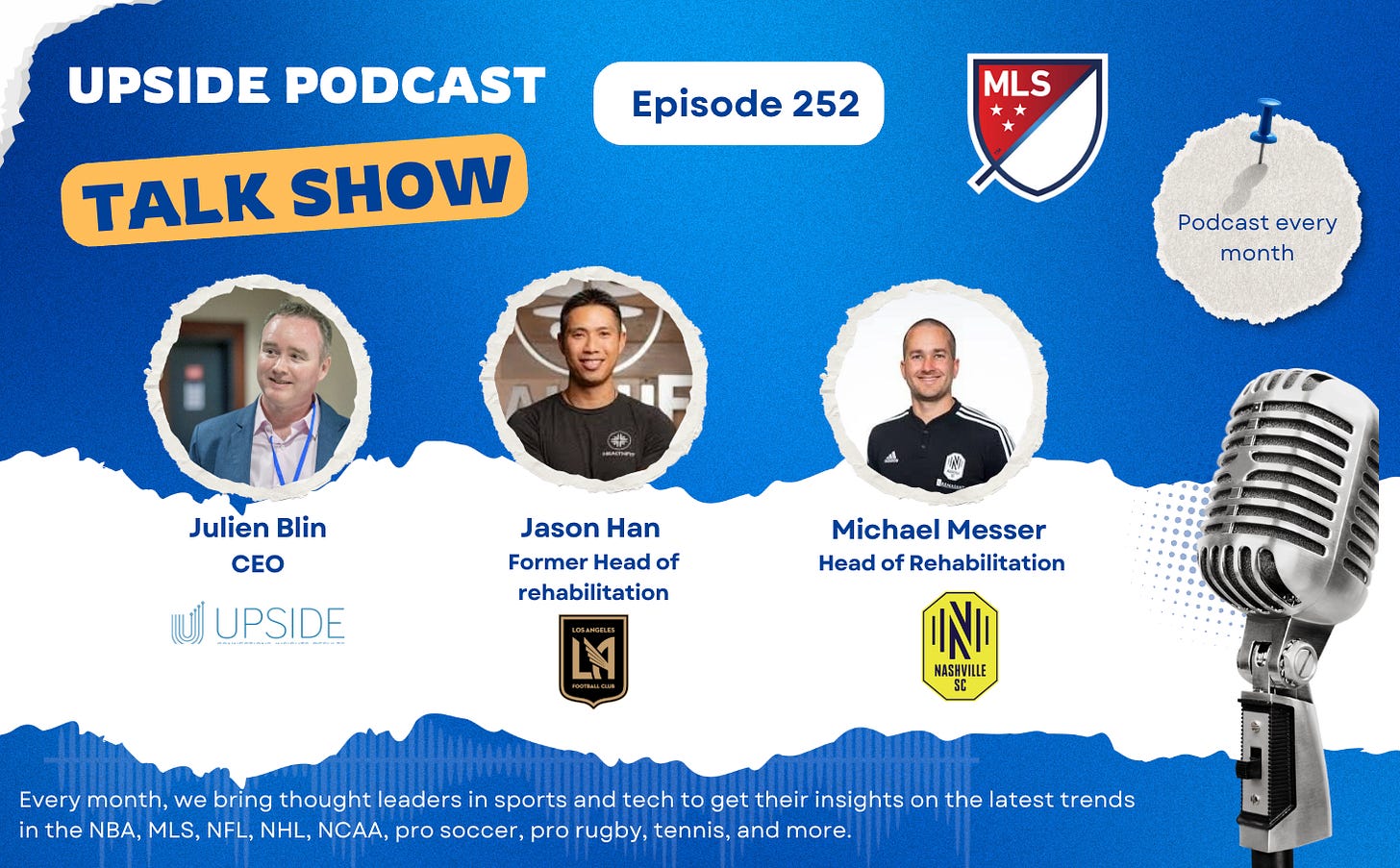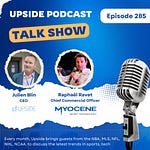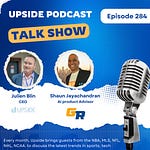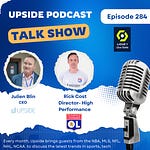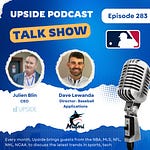This week we have the honor to interview again a group of sports performance executives to talk about the latest trends in the world of sports performance and rehabilitation.
Jason Han, the former head of rehabilitation at LAFC (MLS). Jason is also the head of business development in North America at OneBase health.
Michael Messer, the head of rehabilitation, Nashville SC (MLS).
You can watch the video interview below or you can listen to the audio interview above:
📝Show Notes: Through this interview, we touched on:
Biohacking: We're seeing more interest in biohacking across elite sports — from cold exposure to red light therapy. What biohacking tools or methods are actually making an impact in MLS environments?
Biohacking - evaluation: How do you evaluate whether a new biohacking trend is worth integrating into your protocols — and how do you balance innovation with scientific rigor?
Shiny objects: With so many technologies and “shiny objects” in the performance and recovery space, how do you ensure that your team stays focused on core performance goals rather than chasing trends?
MLS Teams’ evolution: Where do you think MLS teams need to innovate next to stay globally competitive — whether in staff structure, tech, or player development?
PSG’s win in the CL finals: What did you think about PSG winning the Champions league this weekend? Were you surprised?
You can read the full transcript of the podcast interview located at the top of this blog post.
Here are some of the best quotes of our conversation with Michael and Jason:
Q1. Biohacking Tools Making an Impact in MLS
Jason Han:
“What got me hooked on the Oura Ring was my time at LAFC. We wanted to improve athlete sleep, but to do that, we needed to understand what their sleep actually looked like. So we went heavy into Oura in season two or three. I’ve been using it ever since. You can ask an athlete, ‘How did you sleep?’ and they’ll say ‘Good,’ but when you actually see the data, you realize they were in bed for seven hours but only got five hours of real sleep. Then you look at metrics like resting heart rate, deep sleep versus REM — now you have real insights to work with. That gave us the tools to educate players and shift habits. In my last two years at LAFC, we even started posting team sleep scores to create awareness and accountability. Some players didn’t care, but others became more invested. It wasn’t just data — it sparked real behavior change.”
Mike Messer:
“We’ve dabbled in a variety of biohacking tools — Whoop bands, red light therapy, infrared saunas, hyperbaric and cryo chambers. But one of the most impactful things has been sweat testing. We wanted to optimize hydration for each athlete, so we used patch-based tools and even saliva testing to build individualized hydration profiles. It’s easy to overlook, but hydration directly affects performance. We've also seen personal devices like Oura Rings grow in popularity. Some players wear them independently, and the cool part is it opens up conversations. Personally, my Oura Ring has been dead-on predicting when I or others are about to get sick. It gives a warning — and sometimes you can’t avoid it, but it allows us to take proactive steps. That level of early insight has been surprisingly valuable.”
Q2. Evaluating Biohacking Trends with Scientific Rigor
Jason Han:
“Whenever we consider something new, we ideally try to roll it out one thing at a time. If you bring in too many things at once, you lose clarity on what’s actually making an impact. My go-to example is hyperbaric chambers. If we only use it once a week, we might wrongly conclude it doesn’t work. But used properly and frequently, we’ve seen solid results. That’s why education is critical — how to use it, when to use it, and what to track. Scientific evidence helps, but I also like to try things personally before pushing them on players. A lot of the published hyperbaric studies are on 2.0 ATA chambers, but I’ve seen great results using 1.3 or 1.5 ATA mild chambers when protocols are followed. Sometimes the science hasn’t caught up to real-world use cases.”
Mike Messer:
“Budget is often the first filter. There are great tools out there, but we can’t chase them all. After that, we look at whether there’s a logical mechanism of action and, importantly, whether our athletes are requesting it. Sometimes they’ve used something elsewhere or heard about it from a teammate. That opens the door. If we can try it via a demo or trial period, that’s a huge plus. That hands-on experience — for staff and players — goes a long way. We’ve seen some formal evaluation frameworks, but honestly, our process is case-by-case. It’s less about ticking boxes and more about: does it solve a real problem we’re facing with our guys right now?”
Q3. Avoiding Shiny Object Syndrome
Jason Han:
“At LAFC, we had performance and rehab meetings every morning and after training. That structure was critical. It kept us grounded in the ‘why’ — why are we using this tool? What’s the actual player availability? How many are training? Who’s missing games? Once you see the patterns — maybe it’s a sleep issue, maybe it’s recovery, maybe it’s behavioral — then you can look at what tool can actually help. Tech for tech’s sake doesn’t make sense. We also made sure that for each new piece of technology, one person on staff owned it. They’d become the go-to expert so we weren’t just scratching the surface across four different staff. It kept our protocols efficient and impactful.”
Mike Messer:
“A lot of our technology adoption has started with a specific question. I remember early on, we had a player recovering from a quad injury. I wanted a way to track kicking mechanics during rehab. That led us to PlayerMaker, and we’ve slowly expanded our use since. It wasn’t about chasing trends — it was about solving a real rehab need. That mindset — start with the question, not the tool — helps prevent tech clutter and keeps us aligned with performance goals.”
Q4. Where MLS Needs to Innovate Next
Mike Messer:
“One major gap we still see is in the youth development system. Overseas, soccer is everything — it’s part of daily culture. In the U.S., we’re still fragmented. Programs like MLS NEXT and MLS NEXT Pro are good steps, but we haven’t reached that all-in cultural integration. Then on the staffing side, we’re still lean compared to top clubs abroad. They have more people in the building, and when that staff is well-aligned and resourced, it makes a huge difference. I’m a Manchester United fan, but you compare them to City — City made structural changes behind the scenes, and the results speak for themselves. It’s not just the players — it’s the system supporting them.”
Jason Han:
“I agree with Mike. It's not just about hiring more people — it's about hiring the right people and giving them tools. At LAFC, there were times I’d go months without sitting and watching a full training session. Why? Because we always had players in rehab. There’s never downtime. If you’re managing eight to twelve athletes with one or two rehab staff, it’s hard to give each player the individualized attention they need. Now imagine what’s possible if teams invested in more depth and specialization — physios, nutritionists, mental coaches — especially for long seasons. More staff doesn’t guarantee better outcomes, but it enables them when you have the right culture.”
Q5. PSG Winning the Champions League
Mike Messer:
“Honestly, I was a bit surprised — not because they aren’t capable, but because I haven’t followed the Champions League as closely this year with new parenthood in the mix. But from what I’ve gathered, PSG made deliberate changes. It wasn’t just about stars anymore — it was about system and culture. From what I’ve heard, they restructured their philosophy and staff approach over the last few years, and this win seems like the payoff for that. A 5–0 result in a final? That’s more than talent — that’s cohesion and alignment.”
You may also like:
🔥Upside Chat with Mike Messer (Nashville SC / MLS), Rick Cost (US Soccer), Jason Han (Ex LAFC / MLS)
This week we have the honor to interview again a group of sports performance executives to talk about the latest trends in the world of sports performance and rehabilitation.


